Space Fishing by Robert Winglee (NASA)
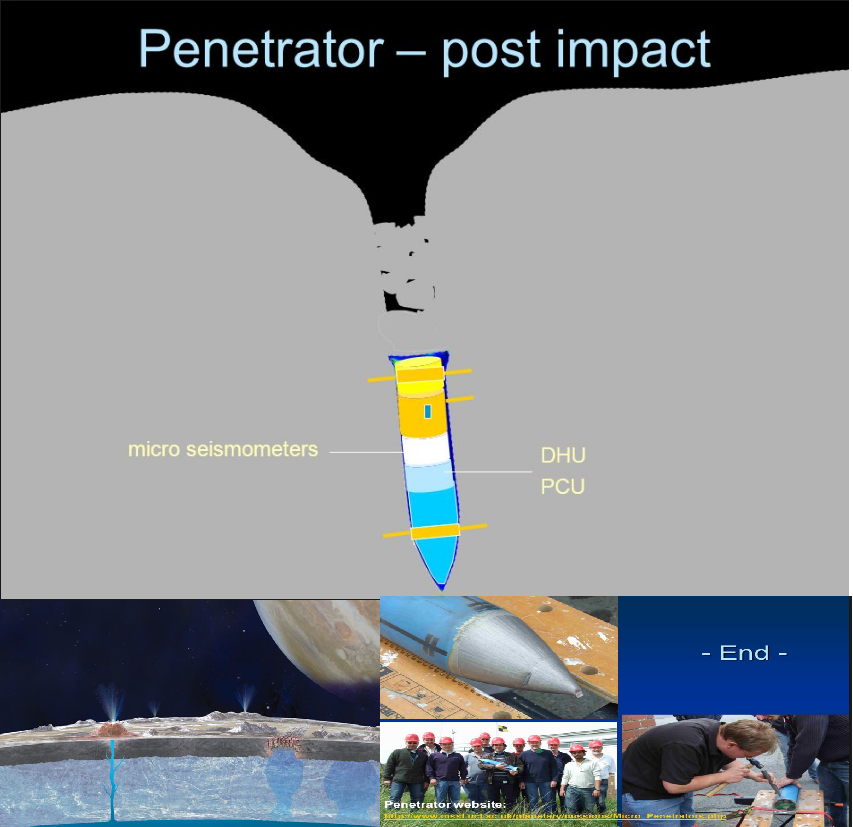
For the work of Robert Winglee, I probably follow from the time of Alma-mater. Interest has been since the publication of the Mini-Magnetospheric Plasma Propulsion (M2P2) . An interesting and enthusiastic (I would even say a very keen) person (maybe a “humane”), who sometimes completely forgets his basic knowledge gained at the university.
At one time, I even squeezed an article on this topic article: MagBeam: plasma cheating .
Nadys read about his new development (and new hobby) Europa Kinetic Ice Penetrator System for Hyper Velocity Instruments University of Washington, 2016 Committee: Robert Winglee &
Carl Knowlen and immediately remembered the article Cosmic Concept: Going Fishing on Other Planets .
')
The news is already with a "smell", but maybe someone will be interested. Moreover, NASA has not yet canceled its financing . As Popmech writes:
Due to the exorbitant cost, only a few missions, including lunar Apollo, were able to deliver samples of extraterrestrial material (soil) to Earth. One scientist wants to change this paradoxical situation, and proposes the idea of a spacecraft with a variation of fishing rods, which can get soil material from a planet or an asteroid without actually landing.
And who is this hero? Of course the inventor of MagBeam is Robert Winglee!
Robert Winglee, chairman of the Department of Earth Science and Other Space Sciences at the University of Washington , says that missions — those that deliver soil materials from other astronomical bodies to Earth — give very little information about the structure of the Universe, because of their small number and, usually due to huge costs.
The spacecraft must land on the surface of another planet (satellite, asteroid, comet), take a sample, take off and deliver it to Earth.
“This does not mean that technology does not exist,” says Winglee. "This means that the cost of such an operation is quite high."
But Winglee and his students think that they have a system (technology) that can drastically reduce the cost of extracting a sample of alien soil by eliminating the landing stage of the spacecraft from the mission. Like this. No more no less. I focus on the attention of the reader. A team of students, under the direction of Dr. Winglee, is conducting research on the development of a spacecraft, which could have flown past a planet or an asteroid, without actually landing, to fire at the surface with a penetrator tied to a spacecraft with a cable. The resulting material, the spacecraft will take back (will pull the probe for the cable) on board and return to Earth.
At first glance, everything is cool and reasonable. Tests on the ground, shelled desert soil, log, ice and other improvised substances.

Whole groups and consortia are organized ( UCL DEPARTMENT OF SPACE & CLIMATE PHYSICS
PLANETARY SCIENCE GROUP ) there is a project Europa Kinetic Ice Penetrator (EKIP) .

As soon as they did not torment the bullets, ground, ice, glass and students.




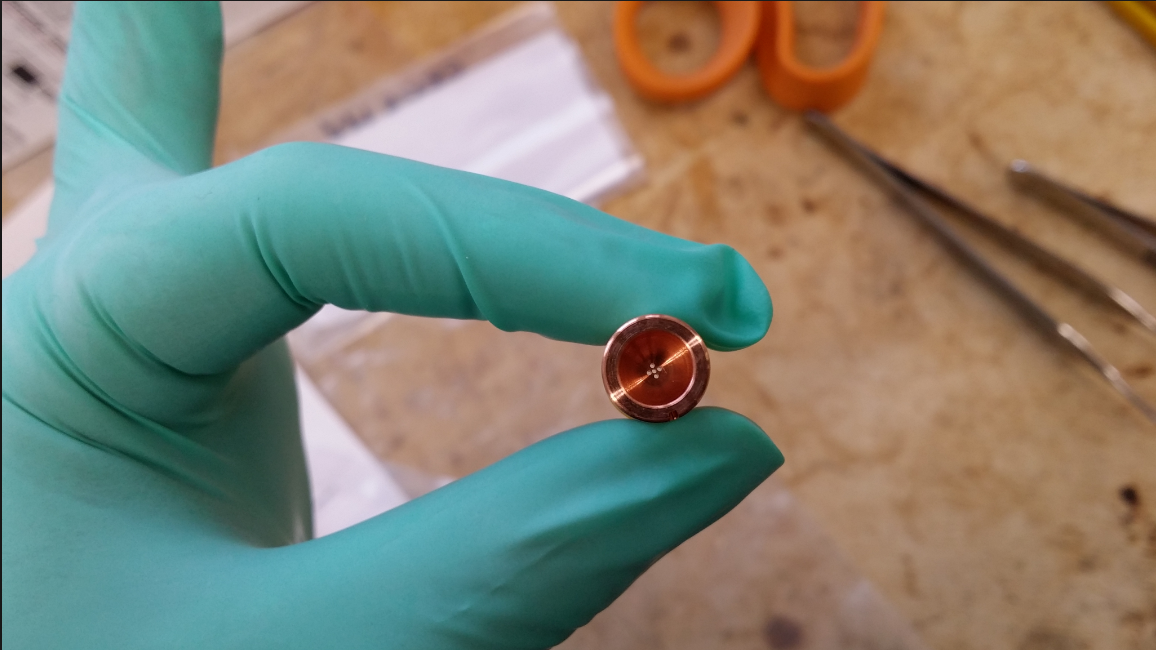
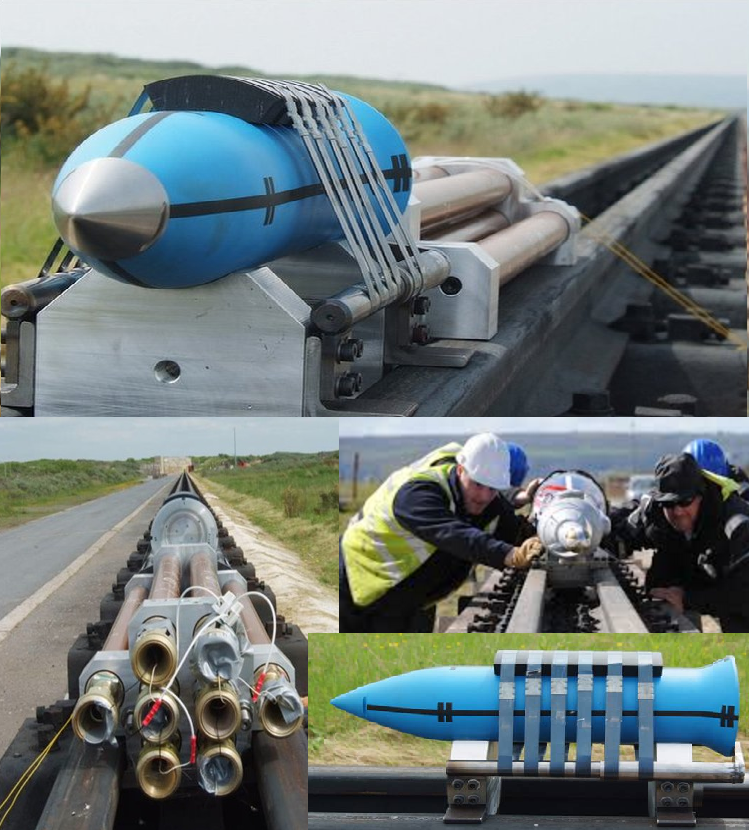
In general, the procedure is as follows:
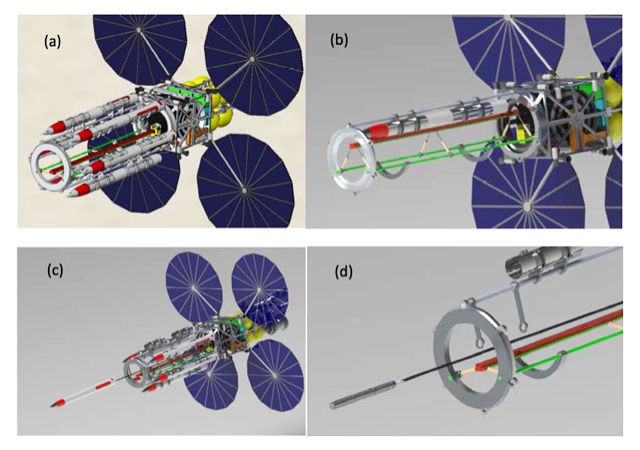
Researchers conducted their tests initially on “soft soil” sites: the bottom of a dried-up lake in the Black Rock desert (Nevada) , and is about to prepare to switch to “hard” in China Beach , where they encounter difficult types of volcanic soils - very similar in composition to those that can occur on asteroids.
If their shells survive the impact there, it is expected that this technology can be launched within ten years.
“I think we will either master it or break it,” said Winglee. "We would like to know how Mach 2 speed affects the state of a drill when it enters solid ground."
Consciously concentrating on the use of the term “Mach 2 speed”!
"It would have been an impact on the world where it would have been possible."
I would like to talk about the use of Robert M. Winglee Mach number concepts for practically no atmospheric satellite of Jupiter (Department of Earth and Space Sciences, University of Washington Seattle, WA 98195-1310, Director Washington NASA Space Grant Consortium) O2 and H2, the atmospheric pressure on the surface of Europe is approximately equal to 0.1 µPa (but not more than one micropascal), or 10 ^ –12 atm) and at a temperature not at all + 20 ° C).
For reference:
1. Pressure in the chamber installation for thermonuclear reactions up to 10 ^ -11 atm;
2. The pressure of the atmosphere at an altitude of 120 km above the Earth is about 2.67 * 10 ^ -3 atm;
Vacuum engineering space is far beyond the line of Karman .
What are the Mach numbers and Reynolds?
In the interview, he spoke about speeds of 650 m / s. Anyway. The eternal story of "managers" and engineers, "holes" and holes. NASA allocated money (as with MagBeam). "Life is a success."
Innovators tormented various construction materials: aluminum, composites, steel. Even IT was performed by some cool program for all the “calculations”:

Note:
Europa here has nothing to do with Europe, as part of Eurasia .
Europe here is a satellite in the Jupiter system (the sixth satellite) - or Jupiter II.
For acquaintance "futurology from RenTV" . No, you do not kick me for the fact that I do not rumble about the case, a sort of retrograde from Roscosmos ! Just my spent years studying and earning bread, generate the "Voice of one crying in the wilderness . "
I'll try to justify my whining:
1. “Penetrator” is essentially an analogue of a construction dowel . Log in, he certainly will, in the ice of Europe all the more. But about the "exit" and "pull it with a cable" from the spacecraft, I am afraid there will be significant problems. Yes, of course: you can use pyrozapals (most importantly, so that they do not work when the planetoid crust is broken through) to release a dynamic drill, however ... " Vague doubts are tormenting me again . "
My experience of using dowel-pistols is outraged and yells: “nothing will come of it”. Namely: skew, pereklinit, temperature deformations again (when passing BOPS through armor (bronestal) flows (and BOPS flows the same).
In general, the whole "idea" proposed by Winglee & Co., Looks utterly strange. Analog: "Rooting up a stump with the help of a car . "
Only without support already.
Apparently the professor does not read Geektimes and Philip Terekhov (@lozga in particular:
How to rely on emptiness? ). What is there (at the University of Washington) with orbital speed and a reserve of + ? I think so either the spacecraft will be attracted to Europe (Asteroid), or (if a miracle happens), Europe will be attracted to the spacecraft.
2. "And what for goat bayan?"
What do we know about Jupiter II (I cite Europe, as there is no point in talking about other asteroids)? A lot (since Copernicus already quite a lot).
Orbital speed (v) = 49,476.1 km / h
Acceleration of gravity at the equator (g) = 1.315 m / s²
Second cosmic velocity (v2) = 2.026 km / s
Moon for comparison . The second cosmic velocity for the Earth (v2) = 11.2 km / s. The spacecraft went to "separation" in the direction of Jupiter. Before Europe it is necessary to slow down (or rather, first equalize the speed and vector of the spacecraft with the orbital speed and the vector of Europe, and then slow down). The first cosmic velocity (v1) for Europe = 1.68 km / s
I still remind "Voyager-2":
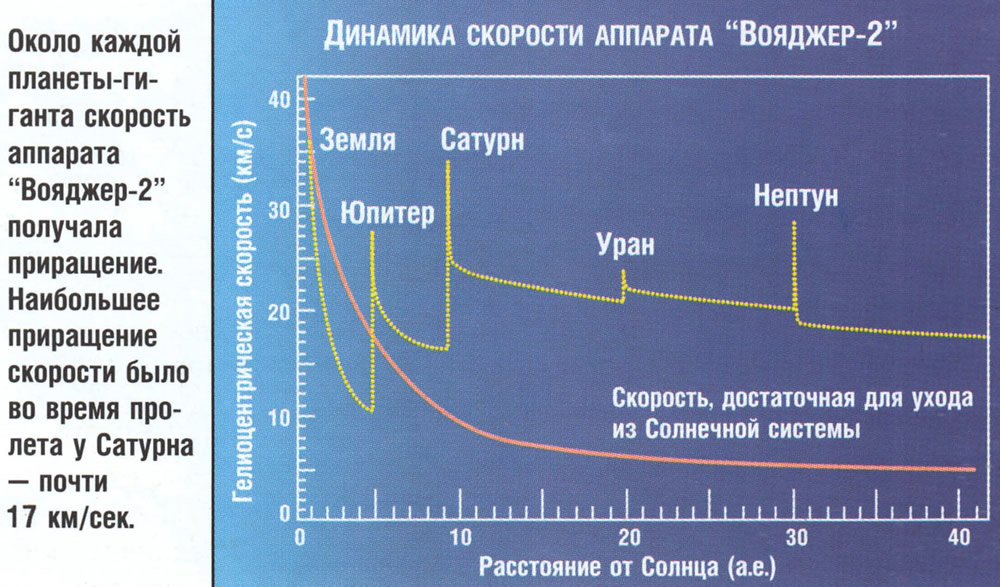
Those. V = 10-10.5 km / s, it is necessary to extinguish to 1.68 km / s, synchronize the orbital speed and rotation speed (13.73 km / s), reach the geo-orbit of Europe, fire the drill-penetrator, drag it back (n. 1) and develop a second space to return to Earth.
Reference: The second cosmic velocity (v2) for Europe = 2.026 km / s.
I won’t even consider that it is more profitable in terms of mass: the fuel supply for landing on the practically airless Jupiter satellite and starting from it, or the penetrator + solid propellant to accelerate it to 2Mach + cable + electric motor for its winding (lifting) + stabilizers of the bay rotation (dampers, stoppers, etc.) + engines of orientation and orbit correction + gyrodyne + what else I forgot a celestial body having g = 1.315 m / s².
For me, the conclusion is obvious . Calmly sit down, drill (or pick with a scraper), place in a container, take off, give impetus to dial v2 and deliver the cargo to Earth.
Everything is as usual - Luna-16
KA mass: 5725 kg. Mass of the return missile: 512 kg. Mass of the saved device: 34 kg.
The return missile is an independent missile unit with a single-chamber liquid jet engine of 1850 kg and a system of three spherical tanks with components of nitrogen tetroxide and asymmetrical dimethyl hydrazine. The diameter of the central tank is 67 cm, the diameter of each of the peripheral tanks is 53 cm. The fuel supply system is pressure. To stabilize BP on the active site, steering nozzles of 70 kg were used.
Only 512 kg ... and this is taking into account that the initially corrective-braking module (CT) was created for the delivery of a self-propelled vehicle to the surface of the Moon.
Well, or option Appolon .
Something that you like. The proportions change (it is understandable, the masses are different), but the principle is the same.
3. If so much remote sensing: fired a rocket projectile, stirred up the junction of Jupiter’s satellite, took a dust cloud spectrogram, made a radioisotope analysis, with favorable circumstances, “sucked” some of the emission products into the container (no atmosphere, gravity miser) and home.
Everything. Report completed. Who did not fall asleep, thank you very much.
Original sources and used photos, videos and documents
Source: https://habr.com/ru/post/401715/
All Articles